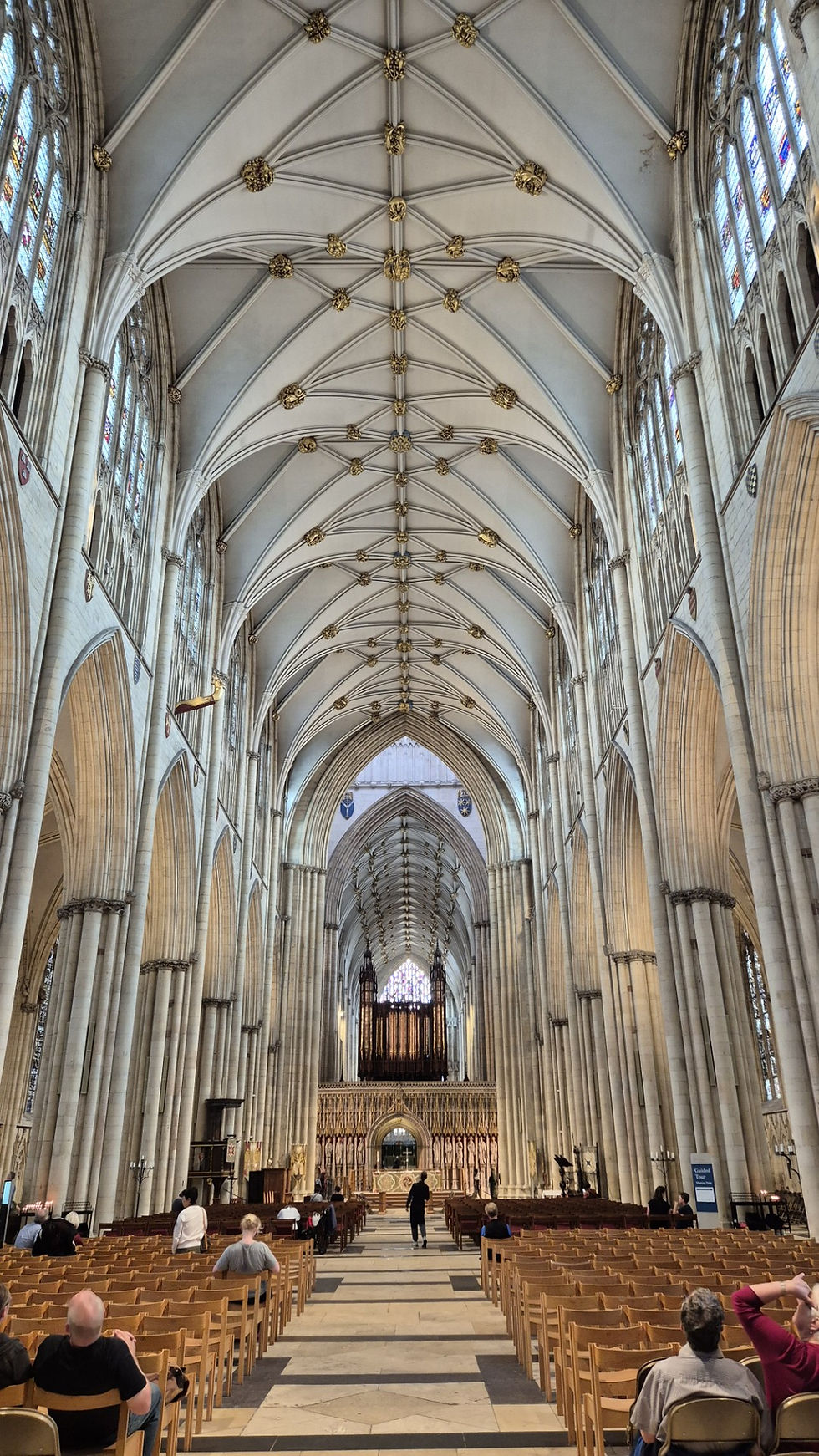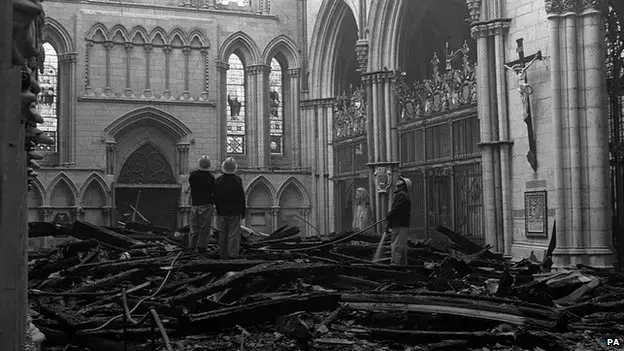Rebuilding Beauty from Ashes: What I Learned Visiting York Minster
- johannavalentine

- Jun 11
- 2 min read
Updated: Jul 6
I recently had the chance to visit the stunning city of York—and like many, I was drawn to the awe-inspiring York Minster.

It’s a place steeped in centuries of history, faith, and artistry. But during my visit, I uncovered a lesser-known chapter: the devastating fire of 1984, and the remarkable restoration that followed.
In the early hours of Monday 9 July 1984, York Minster was struck by lightning, sparking one of the worst cathedral fires of modern times. Within hours, flames had gutted the roof and vaulted ceiling of the south transept. I stood there, looking up at the beautifully restored space, trying to imagine the chaos of that night—114 firefighters rushing to save the cathedral, as minster staff and clergy scrambled to remove precious artefacts from the building.
What struck me most was the sense of community and craftsmanship that emerged in the aftermath. Restoration took over four years and cost £2.25 million—a staggering amount at the time. Yet it wasn’t just about money; it was about people. The masonry team spent a year painstakingly re-carving stonework above the rose window and arches. In a lovely detail, several of the new stone bosses were designed by children in a competition run by Blue Peter—a reminder that even in times of loss, creativity and hope can flourish.
The rose window itself, a breathtaking piece of 16th-century stained glass created to commemorate the marriage of King Henry VII and Elizabeth of York, endured temperatures of up to 450°C during the fire. Miraculously, although it cracked in about 40,000 places, it was saved thanks to the meticulous work of the York Glaziers Trust. Even today work continues to preserve and restore it.

I also learned about the incredible individuals who led the rebuilding effort. Bob Littlewood, the then-superintendent of works, played a key role in the restoration of the timber roof. The day after the fire, he was offered 260 oak trees by people eager to help—and he successfully convinced the church to restore the roof using traditional timber methods, staying true to the Minster’s original design.
John David recalled the surreal and traumatic night. He was part of the salvage team and, like so many, was devastated by the fire. But his words stayed with me:
"There was no doubt we could do it. We wanted to put it back to the way it was."
That spirit—of care, pride, and determination—resonates through every detail of the restored Minster.

My visit reminded me that buildings like York Minster aren’t just stone and glass—they’re vessels of community memory and collective resilience. The fire was a tragedy, but the response was nothing short of inspiring. It was about more than restoration—it was about reclaiming identity and heritage through craft, community, and care.























Comments